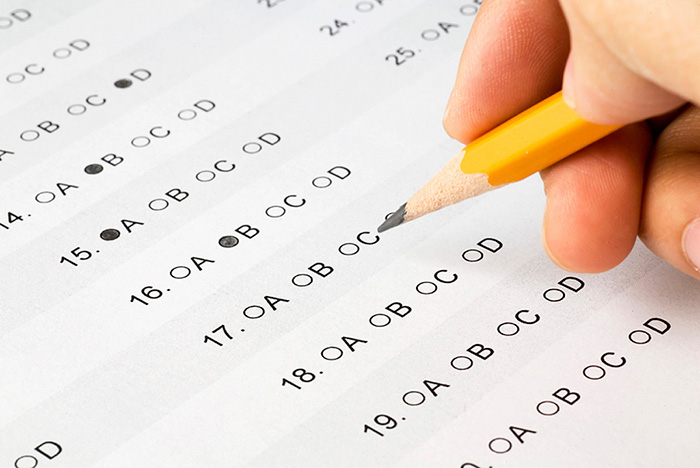
Although the standardized tests are months away, students, parents, teachers, administrators, and politicians are already mired in debate over the Common Core Standards (CCS). Websites are popping up to help teachers find and adjust to new lesson plans, new standards, and new materials.
While some teachers favor the new standards, others increasingly oppose them, as do education luminaries like Diane Ravitch. But regardless of your stance on their efficacy, the CCSs offer a window into a number of current policy debates about best practices in education at all levels.
High-stakes testing culture
A major complaint in American education is that students spend too much time taking tests, and this testing detracts from their ability to learn. An op-ed writer in New Mexico took on the challenge: for her state, at least, this was not the case. She reports that testing runs from 18 minutes to 22.5 hours over the course of the year (depending on grade level), or about as long as finals week at your average college. As for preparation? The point of the tests is not to teach to the test, but rather to teach broadly so that students can do well on the test. To this end, educational companies are creating video games and comic books that are aligned to CCS materials.
Now that the image of Ichabod Crane with his ferrule has left your head, we can turn to the tests themselves. Surprisingly, most school professionals are worried not about content, but about implementation. In Massachussetts and Maryland, IT workers are scrambling to install enough computers and broadband for the online assessments (paper versions are by request only).
States’ rights in education
Technically, the CCS offer benchmarks, rather than a set “curriculum”. States and school districts have the right to meet those benchmarks through whatever texts they choose. But because the CCS offer a set of national set points and a limited number of assessment measures (i.e., tests), there’s some concern that teachers, especially in low-achieving districts, will teach to the tests, instead of the benchmarks. In addition to limiting student learning (see above), teaching to the test would allow textbook companies to become even more standardized.
There are already a number of concerns about the oversized impact of populous states on teaching materials. Perhaps the most controversial have been Texas history and social studies books, which critics claim reinforce a right-wing and Christian agenda and gloss over historical developments, such as the civil rights movement, that do not fit with those ideologies.
To be fair, some of the concerns about unbalanced materials could be overcome with a teacher’s guidance — after all, students are not meant to learn in isolation. One example of this is a political cartoon complaining about the tax burden of social services: in a high-school civics or US history class, such a cartoon could help frame a discussion about the purpose of taxation. But in a classroom where a teacher is trying to play catch-up and teach the material on a test, such debates may well get left aside.
Career/college prep
The CCS website proclaims that the standards are “Preparing America’s Students for College and Career”. Of course, these are two substantially different futures, although they are often conflated (and certainly not mutually exclusive), a problem that I discussed last week. “Tests do not — and cannot — measure the key skills and traits necessary for competing in the global economy,” Thomas Scarice, a Connecticut-based superintendent of schools, has argued.
Other officials focus on improvements to previous curricula. In Alabama, the superintendent noted that almost all graduating high schoolers passed the NCLB-sponsored state test with flying colors, but did poorly on their ACTs. He expects that the new CCS-aligned tests will better reflect actual student knowledge, allowing teachers to rise to the challenge of improving educational outcomes.
Teacher assessment
And finally, the elephant in the room: teacher evaluation via student assessment. This is the so-called “value-added” metric, which has been widely decried by mathematicians and educational groups alike. Efforts to improve evaluation metrics have been scattershot. As a result, in some states up to 50% of a teacher’s performance evaluation may be tied to their students’ test scores.
Because of the major changes to school curricula, some states have delayed or altered evaluation metrics to give teachers time to adjust. Even the Gates Foundation is hailing the delay as a good idea.
An even better idea? Maintaining high standards without judging half a teacher’s worth by his or her students. Remember that these tests aren’t given at the beginning and end of the year, but at most once a year. Even the most optimistic VAMer should know that tests don’t measure just one teacher.
About the Author: Jaclyn Neel is a visiting Assistant Professor in Ancient History at York University in Toronto, Ontario.